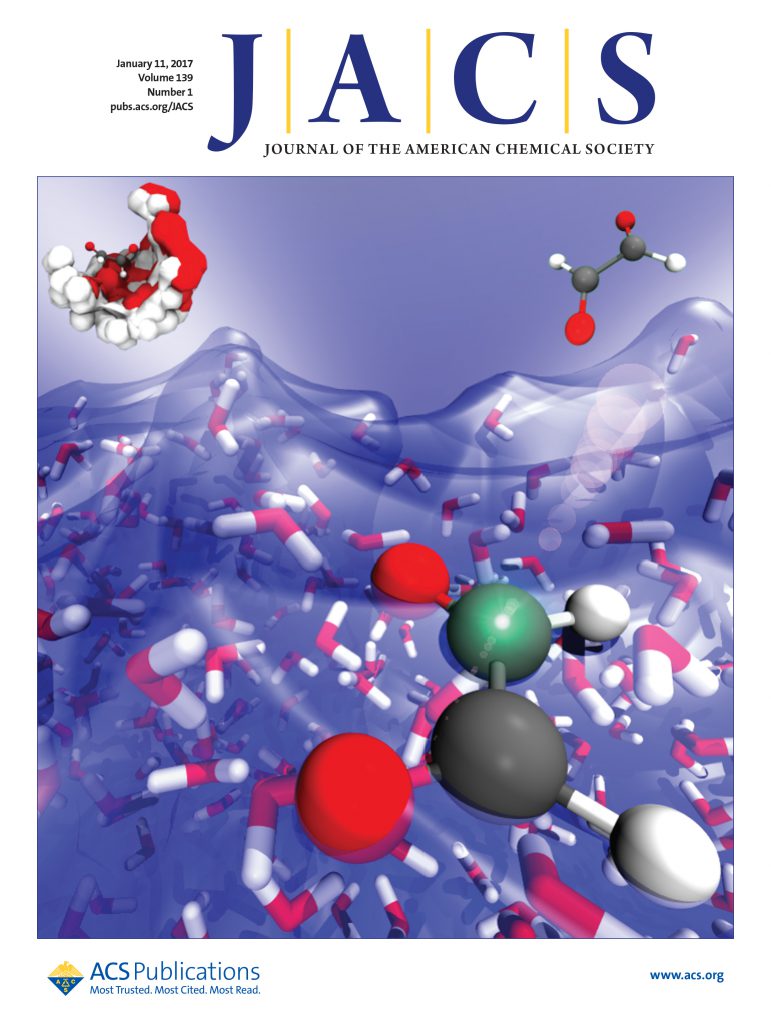Activating Lattice Oxygen in Perovskite Ferrite for Efficient and Stable Photothermal Dry Reforming of Methane
IF 14.4
1区 化学
Q1 CHEMISTRY, MULTIDISCIPLINARY
引用次数: 0
Abstract
Lattice oxygen (LO)-mediated photothermal dry reforming of methane (DRM) presents a promising approach to syngas production. However, realizing high DRM efficiency and durability remains challenging due to the difficulty in activating LOs in catalysts. Herein, we demonstrate that partially substituting Fe sites in perovskite ferrite (LaFeO3) by Mn triggers LOs, bestowing the catalyst with superior activity and stability for photothermal DRM after modification with Ru. The Mn exchange induces a charge transfer from La to Mn, which combined with the incoming photoexcited electrons reconstructs the perovskite’s electronic structure, weakening the La–O–Mn bonds and facilitating the LO migration. Meanwhile, photogenerated holes migrate to surface LOs, further enhancing their reactivity to mediate DRM. Under light irradiation, the catalyst exhibits an outstanding syngas production rate (H2: 42.89 mol gRu–1 h–1, CO: 54.92 mol gRu–1 h–1) while stably operating over 150 h. It also achieves a methane turnover frequency of 0.9 s–1 and a light-to-chemical energy efficiency of 15.3%, setting a benchmark for light-driven DRM performance. This work underscores the significance of exact site doping in metal oxides to fine-tune LO activity, providing valuable guidance for fabricating efficient catalysts for solar-powered redox reactions proceeded via the light-supported Mars–van Krevelen mechanism.

激活钙钛矿铁氧体中晶格氧用于甲烷高效稳定的光热干法重整
晶格氧(LO)介导的甲烷光热干重整(DRM)是一种很有前途的合成气生产方法。然而,由于催化剂中的LOs难以活化,实现高DRM效率和耐久性仍然具有挑战性。本文中,我们证明了用Mn取代钙钛矿铁氧体(LaFeO3)中的部分Fe位点可以触发LOs,使Ru改性后的催化剂具有优异的光热DRM活性和稳定性。Mn交换诱导了从La到Mn的电荷转移,与入射的光激发电子结合,重构了钙钛矿的电子结构,削弱了La - o - Mn键,促进了LO的迁移。同时,光生空穴向LOs表面迁移,进一步增强了它们介导DRM的反应性。在光照射下,该催化剂在150 h内稳定运行,H2: 42.89 mol gRu-1 h - 1, CO: 54.92 mol gRu-1 h - 1,甲烷转换频率为0.9 s-1,光化能效率为15.3%,为光驱动DRM性能奠定了基础。这项工作强调了在金属氧化物中精确位置掺杂对微调LO活性的重要性,为通过光支持的Mars-van Krevelen机制进行的太阳能氧化还原反应制造高效催化剂提供了有价值的指导。
本文章由计算机程序翻译,如有差异,请以英文原文为准。
求助全文
约1分钟内获得全文
求助全文
来源期刊
CiteScore
24.40
自引率
6.00%
发文量
2398
审稿时长
1.6 months
期刊介绍:
The flagship journal of the American Chemical Society, known as the Journal of the American Chemical Society (JACS), has been a prestigious publication since its establishment in 1879. It holds a preeminent position in the field of chemistry and related interdisciplinary sciences. JACS is committed to disseminating cutting-edge research papers, covering a wide range of topics, and encompasses approximately 19,000 pages of Articles, Communications, and Perspectives annually. With a weekly publication frequency, JACS plays a vital role in advancing the field of chemistry by providing essential research.

 求助内容:
求助内容: 应助结果提醒方式:
应助结果提醒方式:


